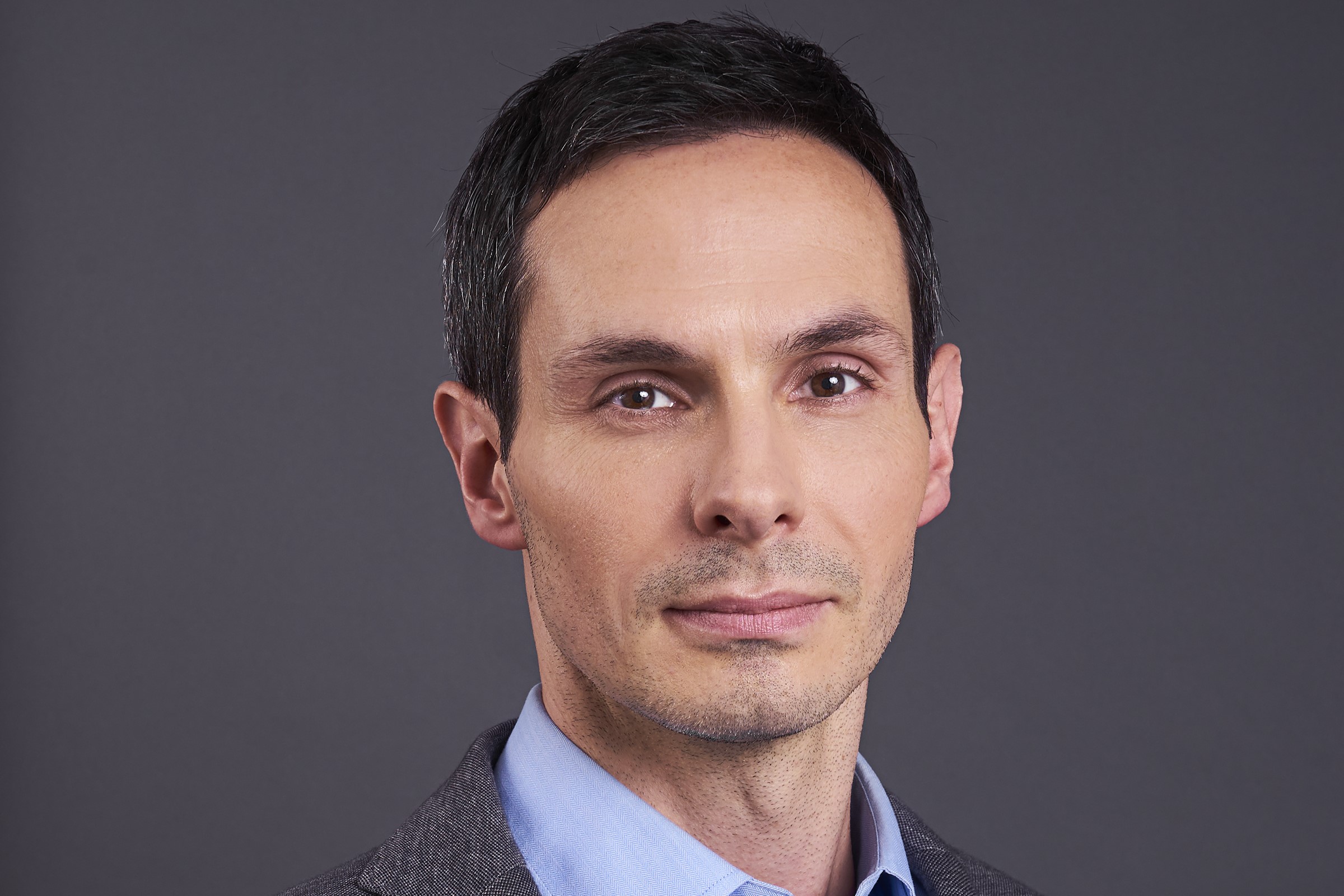
NSI film fest doubles attendance
FilmExchange: NSI’s Canadian Film Festival, held Feb. 23 to March 2 in Winnipeg, reports attendance as nearly double from last year.

More than Nothing at 49th Parallel
Having launched last fall, Toronto production company 49th Parallel, headed by Noah Segal, Steve Hoban and Philip Mellows, has several projects moving forward.
Nothing, the third feature by Cube director Vincenzo Natali, will go to camera in Toronto for about four weeks in May. Segal describes the comedic fable as ‘Withnail and I in space,’ with a couple of dead-end schmoes who subsist on ketchup sandwiches wishing away the rest of the world. Script is by The Drews (a.k.a. Andrew Lowery and Andrew Miller, of Boys and Girls). Miller will star alongside David Hewlett (Treed Murray), and longtime Natali DOP Derek Rogers will lens, but the F/X-laden production has yet to choose between 35mm and high-definition video.

Terminator 3 won’t be back in Vancouver
Vancouver: We may have lost Arnold, but we got Arnie.
The US$170-million blockbuster Terminator 3: The Rise of the Machines briefly lighted upon Vancouver, bringing with it the promise of the biggest feature in B.C. history. But alas.
Officially, studio space opened in Los Angeles, where T1 and T2 were shot. Officially, it has nothing to do with runaway production lobbies or the political aspirations of star Arnold Schwarzenegger, who fancies the comfort of California’s gubernatorial chair.
Officially, it means that Universal Picture’s production costs just increased substantially and the studio has asked for its booked stages in Vancouver to be sublet.

New Melenny slate opens with Saia, Simoneau films
Montreal: This year’s movie slate from high-rolling producer Richard Goudreau of Melenny Productions includes La Louve, an ambitious $20-million Canada/France coproduction with Yves Simoneau signed to direct, and La Balade des dangereux, a $6-million crime-caper comedy from Les Boys director Louis Saia.
La Louve (working title, translation, She-Wolf) tells the haunting story of the legendary 18th century Quebecoise La Corriveau, accused under the Old French regime of murdering two husbands and later hung by the English.

My maiden HD voyage
Duraid Munajim is a Toronto-based director of photography who has shot music videos, short films and documentaries. In this article, he discusses his experience with the Sony 24p format on the documentary Acrobats & Maniacs, about Quebec-based Cirque Eos, acrobats who incorporate choreography, music and special effects.

Post shops vie for long-form work
High-end TV series no doubt represent a sort of Holy Grail for many Canadian post-production shops. But the reality is that many facilities, except for the very largest and even some of those, take on whatever projects they have to, including corporate videos and infomercials, to keep busy. This is especially true with an increasingly fragmented broadcasting industry and shrinking licence fees for high-budget production.

Fast Runner slows the pace
The Fast Runner – Atanarjuat walked away from this year’s Genies with the achievement in editing award among its half dozen statuettes. What makes that particularly impressive is not only that the Igloolik Isuma/National Film Board coproduction is the first-ever Inuit feature and shot on video, but also that the cutting credits include two of the film’s coproducers, director Zacharias Kunuk and cinematographer Norman Cohn.

Sports nets shoot for ‘the look’
With eight new sports-based digital channels joining an already growing number of sports specialties, broadcast design studios report that sports nets have become the biggest consumers of 3D animated promos, station IDs, intros and bumpers. And although industry trends adhere to a pendulum-like pattern, one thing always remains: the challenge to imprint brands on viewers’ brains.

Diginets’ branding focuses on design
With an influx of more than 40 diginets vying for eyeballs and branding the name of the game, broadcast design firms and in-house design departments are pulling out the stops to create distinctive and memorable graphics reflecting their respective channels’ programming philosophies.

Gear’s only part of the mix
Doug Morris is executive producer and partner at Soho, a Toronto-based studio that provides CG animation, type design and digital FX for broadcast design and commercial clients.

T.O. could house world’s largest soundstage
Plans for a new studio facility proposed for the port lands in downtown Toronto include what could end up being the world’s largest custom-built soundstage.
Earlier this month, Toronto Mayor Mel Lastman announced the creation of a massive $150-million studio development on the waterfront with the core intent of attracting big-budget (US$50 million-plus) features that have been bypassing the city.
According to the city, the new production centre will generate an extra US$250 million a year in film production.

CFTPA confab spells doom and gloom for Canadian production
Fears for the future of the Canadian production industry, reduced economic growth, the post 9/11 climate and international trade issues, particularly with the U.S., were the most obvious themes at this year’s Prime Time in Ottawa, the annual CFTPA conference held Feb. 6-8.
With roughly 550 attendees, a large portion of whom had association acronyms next to their names, there was standing room only at the conference’s three most pivotal sessions: the State of the Canadian Industry Report, in which Pat Ferns, president and CEO of the Banff Television Foundation, and National Film Board chairman Jacques Bensimon presented the findings of the CFTPA’s Profile 2002; the Pundits Panel entitled Future Shocks: What Lies Ahead for the Canadian Production Industry; and the Jack Valenti Luncheon, at which the president and CEO of the Motion Picture Association of America spoke passionately and poetically of the synergies between Canada and the U.S., while in the same breath denounced governments that ‘put up barricades to exile or restrict TV programs and films which may compete with local creativity.’

Wider performance criteria
Montreal: Richard Stursberg, Telefilm Canada’s new executive director, says the industry has ‘a lot of work to do’ to build box-office performance for Canadian films, notably on the English side where market share dipped to under 0.5% last year. With little in the way of performance indicators – new films produced in the first year of the Canada Feature Film Fund have yet to be released – the newly released CFFF guidelines for 2002/03 hold the line on reserved production and development financing for producers at 50%. Stursberg, however, gives strong indications the fund’s performance component will move to 60% in 2003/04.

Atanarjuat steals the Genies show
As anticipated, the night of the 22nd annual Genie Awards belonged to Atanarjuat (The Fast Runner), the Igloolik Isuma Productions/National Film Board Inuit drama shot on digital video. Those criteria would otherwise make the film’s capture of six Genies a major upset, but the movie had already won awards at Toronto, Cannes, Edinburgh and Flanders. At the Metro Toronto Convention Centre on Feb. 7, it added to its hardware case the Genies for best motion picture, direction, screenplay, editing, score and the Claude Jutra Award for best first director.

Jump Cuts
Cambium, Catalyst merge




 The definitive CDN broadcast and production resource.
The definitive CDN broadcast and production resource.










